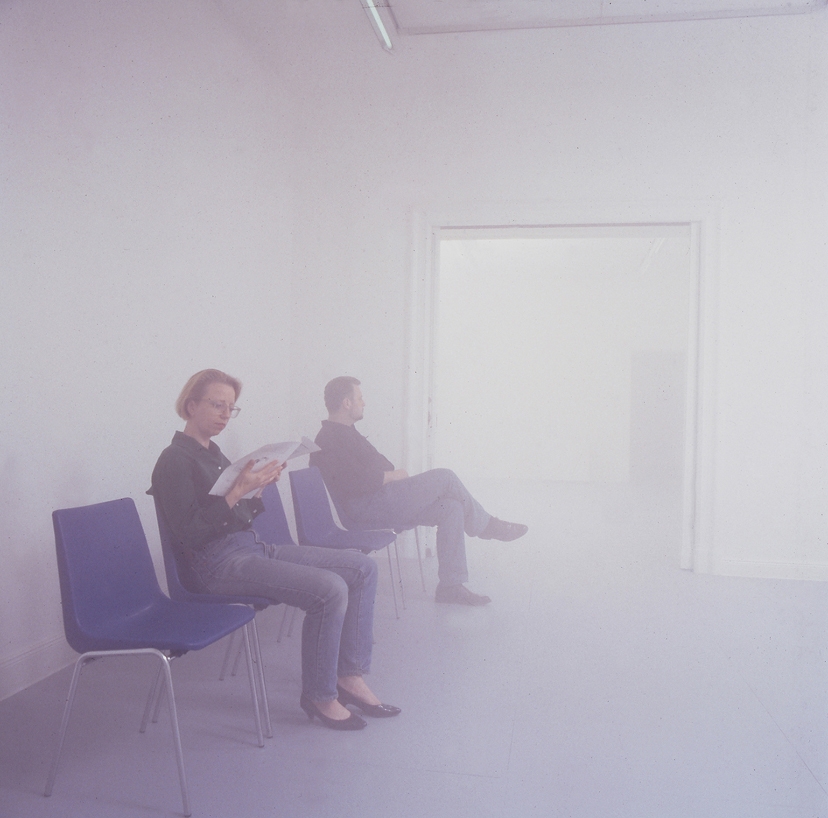Curated by Richard Birkett ‘in dialogue’ with artist Sam Lewitt (the dialogue started during a conference at New York’s Artists Space in 2012), And Materials and Money and Crisis features work by 11 artists (of whom Lewitt is one) and seeks to address the issue of how immaterial factors – the conditions of production and display, the language used to talk about art and the forms of exchange surrounding it – affect the reception of artworks.
In doing so it looks to establish parallels with the more general relationship between capital and material; for the curator, that’s a relationship that ruptured with the dissolution of the gold standard in 1971 (when currency values no longer had to be linked to gold reserves and thus became immaterial), which in turn created the conditions for the current financial crisis. You could argue that the rupture began long before then (perhaps with various eighteenth-century financial bubbles), but no one can accuse this show of lacking ambition or relevance to the present moment. Not least to the financial bubble that surrounds parts of the contemporary art market right now.
What does this all mean in terms of the art on display? Most of the works suggest or are constructed around a narrative (which is why Birkett describes the exhibition booklet, in which these are laid out, as ‘part of the exhibition’). Cheyney Thompson’s Broken Volume (10 L) (2013) comprises cast-concrete sculptures displayed on pedestals and composed of one-inch cubes (with a hint of Antony Gormley about them) in an arrangement generated by an algorithm that underpins many financial modelling tools. We’re left to admire the abstract and inhuman beauty of their (visually-not-so-decipherable) logic.
The five Perspex panels of Henrik Olesen’s Produce 1–5 (2013), to which the artist has attached the debris of his daily life – largely packaging for foodstuffs and male grooming products, as well as taxi receipts and an old iPod – become part diary, part portrait, in which an absent body is captured as a processing plant for various consumer products. In the context of this exhibition it also brings to mind the cliché about one person’s (material) rubbish being another person’s (more-or-less valuable) contemporary art. (As well as another one about the simple ideas being the best.) And more generally, it highlights the way in which the art on show either parallels the curator’s theme in terms of its subject matter or is, inherently, that subject matter.
And yet, a shared theme is not really what comes across to the person meandering through this show. Indeed, as a reviewer, it’s tempting to go on tracking the exhibition as a series of discrete solo presentations, because that’s how it feels. In part this is for practical reasons: Emily Wardill’s stunning 16mm film The Palace (2013), which allies visuals of architecture and a biographical narrative, needs to be shown in a closed space, as does Maria Eichhorn’s Meer. Salz. Wasser. Klima. Kammer. Nebel. Wolken. Luft. Staub. Atem. Küste. Brandung. Rauch (1991) – a chamber filled with a saltwater fog into which visitors enter, absorbing the atmosphere. But it also extends to works such as R.H. Quaytman’s collection of paintings Voyelle, Chapter 26 (2013), which seems somewhat marooned in a cluster on one of Mumok’s back walls.
Even the repeated presence through the show of Melanie Gilligan’s entertaining videoworks 4 x exchange/abstraction (2013) and Lewitt’s Weak Local Lineaments (E2, E3, E4) (2013), copper-clad laminate panels, variously corroded and positioned and scaled to indicate hidden and visible windows on the gallery’s facade, doesn’t draw the whole thing together. In fact, you begin to wonder whether or not the exhibition guide is so central to the show because it’s so hard, on the evidence of your senses, to synthesise anything as precise as the curator’s analysis of the roots of the world’s global economic crisis from the works on display – a slipperiness that, crises aside, is what the common sense tends to posit as separating art from economics in the first place. Perhaps the real point of the show, then, is that the one is as imprecise as the other.
This article was originally published in the March 2014 issue.
